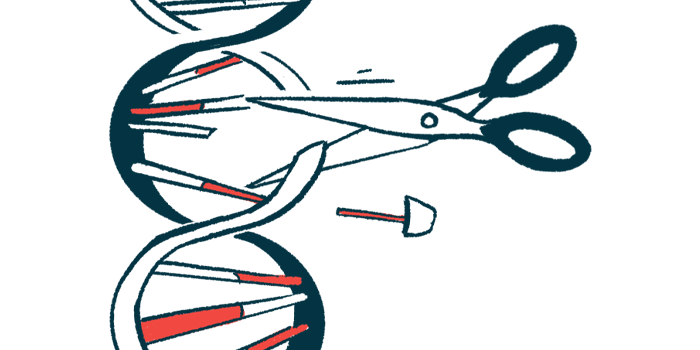Gene-editing technology TALEN shows potential to treat SCD: Study
Treatment was able to correct disease-causing mutation in patient cells
Written by |

TALEN, a gene-editing technology being used by the clinical-stage biopharmaceutical company Cellectis to develop potentially life-changing therapies, was able to correct the mutation that causes sickle cell disease (SCD) in patient cells.
That’s according to a new study published by researchers from the company, along with colleagues from the Université Paris Cité’s Imagine Institute, in France.
“SCD is a devastating blood disorder affecting millions of individuals worldwide. The TALEN gene therapy approach could represent a new alternative treatment, especially for patients with limited therapeutic options,” Julien Valton, PhD, vice president of gene therapy at Cellectis, said in a company press release. “This gene editing process bears a strong therapeutic potential as it could be easily used to correct point mutations associated to many other genetic diseases.”
The study, “Non-viral DNA delivery and TALEN editing correct the sickle cell mutation in hematopoietic stem cells,” was published in the journal Nature Communications.
The researchers say their work “paves the way for TALEN-based … gene therapy for sickle cell disease.”
TALEN gene-editing technology has key differences from Casgevy’s
SCD is caused by mutations in the HBB gene, which provides instruction to make part of hemoglobin — the protein that red blood cells use to carry oxygen through the bloodstream. These mutations lead to the production of an abnormal form of hemoglobin that clumps up inside red blood cells, deforming them into the sickle-like shape that gives the disease its name.
Gene editing is a field of technology that aims to change the genetic code within a patient’s cells as a means of treating a given disease. The first gene-editing treatment for sickle cell, Casgevy (exagamglogene autotemcel), was approved in the U.S. late last year.
Casgevy uses a specific gene-editing technology called CRISPR/Cas-9. Very simply, this molecular technology works by first making a break at a specific point in a gene. Then, when the cell’s DNA-repair machinery is activated to fix the break, the sequence of the gene can be tweaked.
TALEN, short for transcription activator-like effector nuclease, is a gene-editing technology that works similarly to CRISPR. The key differences are that TALEN is generally a bit less efficient than CRISPR, but also much more specific, so it’s less likely to cause off-target effects.
In this study, scientists developed a TALEN-based gene-editing therapy for SCD that was able to target and repair the disease-causing mutation in the HBB gene. In addition to using a different gene-editing system, this mechanism is further distinct from the one employed by Casgevy because that approved therapy does not target the HBB gene. Instead, Casgevy works to inactivate a different gene, boosting the production of an alternative form of hemoglobin called fetal hemoglobin.
To see its effects, the scientists conducted a series of proof-of-concept tests in lab models to optimize the TALEN gene-editing therapy. This included testing two different ways to deliver a DNA repair template into cells: one using a modified virus and another using a long, threadlike piece of genetic material called an oligonucleotide.
The team ultimately found that the nonviral method generally led to better efficiency in gene editing.
Treatment tested in blood stem cells from 9 SCD patients
After optimizing the treatment protocol, the researchers tested it in blood stem cells — also known as hematopoietic stem cells — collected from nine people with SCD. The results showed that the TALEN-based therapy effectively corrected the HBB gene in roughly half of the stem cells, with minimal off-target effects. When the modified stem cells gave rise to new red blood cells, they also found that those cells were resistant to sickling.
“The unique combination of TALEN technology, nonviral DNA repair template design and Cellectis’ PulseAgile proprietary electroporation system enabled us to set up a precise, efficient and clinically relevant HBB gene correction process in long-term hematopoietic stem and progenitor cells from SCD patients,” Valton said.
We posit that the TALEN gene-editing protocol coupled with nonviral DNA delivery presented in this comprehensive preclinical dataset has the potential to be further developed for a therapeutic application targeting SCD.
When SCD patients undergo gene-editing treatment, their blood stem cells are collected, modified in a lab, and then returned to them to grow in the bone marrow. The process of the modified stem cells taking residence in the bone marrow and starting to give rise to new blood cells is called engraftment. The researchers showed that TALEN-modified stem cells from SCD patients could successfully engraft in immunocompromised mice, showcasing their therapeutic potential.
“In this study, we developed a TALEN-based gene-editing process that enables highly efficient gene correction of the sickle cell mutation in patient-derived [cells],” the researchers wrote.
“We posit that the TALEN gene-editing protocol coupled with nonviral DNA delivery presented in this comprehensive preclinical dataset has the potential to be further developed for a therapeutic application targeting SCD,” they concluded.







